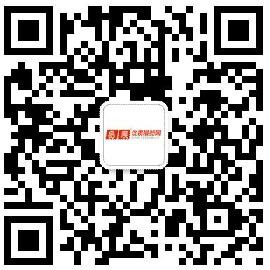一个用于空间科学的光谱仪
MEDET EXPERIMENT ON-BOARD ISS: PRELIMINARY RESULTS OF MATERIALS DEGRADATION ON THE SPECTROMETER SUB-UNIT
Keywords : MEDET, ISS orbit, transmission spectra, UV, IR, materials degradation
ABSTRACT
The MEDET experiment on-board ISS since February 2008, is an opportunity to follow in real time the phenomena degradation of a large set of materials used
normally for space applications (20 different materials).
The thermo-optical properties studied by our team during the mission were measured by UV and IR spectrometers.
An UV spectra preliminary data enabled to highlight the two degradation phenomena expected for a such mission namely : yellowing of some materials due to
UV exposure and the decrease of thicknesses for others like polymeric films due to AO erosion.
1. INTRODUCTION
MEDET is a material experiment on board EuTEF/Columbus. It is a fruitful collaboration between ONERA, ESA, CNES and the University of Southampton. It combines seven sub-experiments devoted to the combined measure of the radiative space environment in low earth orbit (LEO) and its associated effects on materials. It allows for real time characterization of the local ISS environment and material degradation such as thermal coatings, polymers for inflatable structures....
The spectrometer experiment is part of MEDET and has been designed for surveying the degradation with time of several types of optical windows (including synthetic ultra-pure SiO2 and other radiation stable materials).
The optical spectral transmission of the samples are measured by a system involving quartz optical fibres, two miniature spectrometer modules (to cover the solar
spectrum from 200 to 1000 nm) and two illumination sensors. The materials to be tested are placed on a rotating wheel, containing 24 apertures and the sun is
used as the light source, so that measurements are allowed only when the light detected by the illumination sensors is in a ± 40° acceptance angle (see figure1 and
figure 2). An encoder system, consisting of photodiodes
.......
Each miniature spectrometer modules consists of a grating, optics and a CCD detector. These are all rigidly housed within the same case. The module is based on a standard laboratory device (Zeiss MMS) which has been adapted for space flight use. However, in order to be operated safely on MEDET, which is an external payload, the miniature spectrometer modules are mounted in a pressurized cylinder. For redundancy, 2 sets of pressurized cylinders (with 2 spectrometers in each) are mounted behind the filter wheel. Both are operating simultaneously allowing each sample to be measured twice at each wheel rotation.
......
详细资料可在网上寻找或到资料库下载 一个用于空间科学的光谱仪
MEDET EXPERIMENT ON-BOARD ISS: PRELIMINARY RESULTS OF MATERIALS DEGRADATION ON THE SPECTROMETER SUB-UNIT
Keywords : MEDET, ISS orbit, transmission spectra, UV, IR, materials degradation
ABSTRACT
The MEDET experiment on-board ISS since February 2008, is an opportunity to follow in real time the phenomena degradation of a large set of materials used
normally for space applications (20 different materials).
The thermo-optical properties studied by our team during the mission were measured by UV and IR spectrometers.
An UV spectra preliminary data enabled to highlight the two degradation phenomena expected for a such mission namely : yellowing of some materials due to
UV exposure and the decrease of thicknesses for others like polymeric films due to AO erosion.
1. INTRODUCTION
MEDET is a material experiment on board EuTEF/Columbus. It is a fruitful collaboration between ONERA, ESA, CNES and the University of Southampton. It combines seven sub-experiments devoted to the combined measure of the radiative space environment in low earth orbit (LEO) and its associated effects on materials. It allows for real time characterization of the local ISS environment and material degradation such as thermal coatings, polymers for inflatable structures....
The spectrometer experiment is part of MEDET and has been designed for surveying the degradation with time of several types of optical windows (including synthetic ultra-pure SiO2 and other radiation stable materials).
The optical spectral transmission of the samples are measured by a system involving quartz optical fibres, two miniature spectrometer modules (to cover the solar
spectrum from 200 to 1000 nm) and two illumination sensors. The materials to be tested are placed on a rotating wheel, containing 24 apertures and the sun is
used as the light source, so that measurements are allowed only when the light detected by the illumination sensors is in a ± 40° acceptance angle (see figure1 and
figure 2). An encoder system, consisting of photodiodes
.......
Each miniature spectrometer modules consists of a grating, optics and a CCD detector. These are all rigidly housed within the same case. The module is based on a standard laboratory device (Zeiss MMS) which has been adapted for space flight use. However, in order to be operated safely on MEDET, which is an external payload, the miniature spectrometer modules are mounted in a pressurized cylinder. For redundancy, 2 sets of pressurized cylinders (with 2 spectrometers in each) are mounted behind the filter wheel. Both are operating simultaneously allowing each sample to be measured twice at each wheel rotation.
......
详细资料可在网上寻找或到资料库下载 一个用于空间科学的光谱仪




 公安机关备案号:
公安机关备案号:




